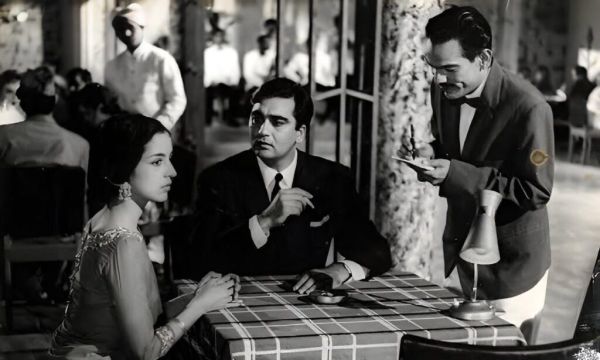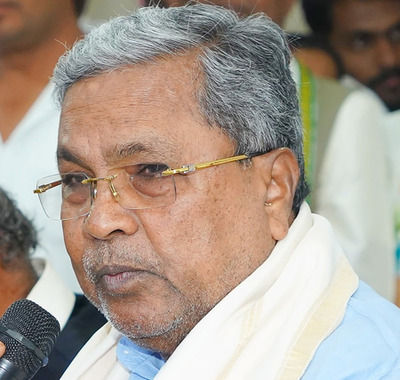

Twelve years after India’s independence, an ingenious Parsi editor of a growing Bombay-based tabloid enters the office of a shrewd businessman with a proposal. He sees an opportunity to catapult his tabloid to mainstream success in the upcoming trial of a decorated naval commander accused of murdering his close friend, a Sindhi businessman, for having an affair with his wife.
In proposing the plan, the editor indicates the conspicuous move of the victim’s sister in using her influence and hiring a Sindhi lawyer to fight the case. He insists that now, the commander would be all alone in facing the wrath of an entire community.
He nudges further that, as fellow Parsis, they all must come together to hire a competent lawyer to argue the case on behalf of the accused. After some initial hesitation, both parties agree. The only word of caution is that the tabloid has to ensure public sympathy never fades for the accused.
Film adaptations of the case
And thus, one of the early scenes in the 2016 film Rustom, directed by Tinu Suresh Desai, unfolds, based on the landmark court case against naval commander KM Nanavati from 1959. The Parsi editor is inspired by Russi Karanjia, who headed the weekly tabloid newspaper, Blitz, placing this proposal to a fictional JRD Tata.
Significantly, there is no evidence for any such dealing taking place between Karanjia and a businessman. While one should not expect films to exactly replicate real-life incidents, it is important to uncover the curious choice of the makers to bring the religious angle into the picture.
Also read: Sholay at 50: How Ramesh Sippy’s film captured India’s angst and anxieties
Karanjia’s Blitz had a notorious reputation for attracting defamation suits for its verbose opinions. But all through the trial, the tabloid never indulged in commenting on the origins of any of the central players. Historian Gyan Prakash notes that neither Nanavati was favoured for being a Parsi, nor was Prem Ahuja targeted for his Sindhi identity, and never once were questions raised over Sylvia for her English origins. That identity becomes such an important part of the case decades after it was closed brings to attention the way in which memories are created, contained, carried and recalled.
Oftentimes, while conjuring the imagery of an event, there is a need to reconfigure it to suit contemporary sensibilities. In writing about the desecration of the Somnath temple, scholar Romila Thapar points to how collective memory is restructured to justify the present. In the three film adaptations of the Nanavati case of 1959 — Yeh Rastey Hain Pyar Ke (1963), Achanak (1973) and Rustom (2016) — this becomes clear.
Background of the case
The life of naval Commander Kawas Manekshaw Nanavati garnered public interest when his wife confessed that she had been unfaithful to him and was having an affair with Prem Ahuja, a close friend of the couple. Shocked by this revelation, Nanavati decided to take matters into his own hands and went to Prem Ahuja’s apartment and shot him point blank, which Karanjia’s Blitz would highlight as the “three shots that shook the nation”. Nanavati quickly exited the house and surrendered himself and his weapon to the police.
Soon, the trial opened on September 23, 1959 in the District and Sessions Court with a nine-member multi-ethnic jury. The court proceedings went on for about one month. Outside of the court, Blitz ran an independent and wholly biased campaign in its weekly issues to inform its readers of not just the trial but intimate details of the lives of the three central characters involved in it. This had an immense impact on how the public perceived the case and, as a result, how the jury members perceived it.
On October 21, the jury came with an 8-1 majority verdict which found Nanavati not guilty of murder, which forms the focal point of most adaptations of the story, even though there is more to it. The Sessions judge referred the case to the Bombay High Court, considering the jury verdict ‘perverse’ in light of the evidence put forth during the trial and pronounced Commander Nanavati to be guilty, sentencing him to rigorous life imprisonment.
The appeal for reconsideration to the Supreme Court did not yield any positive results for the Navy icon, as by 1961, the apex court upheld the conviction. However, being part of influential circles, Nanavati was destined to be imprisoned for no more than three years, after which he was granted a pardon by the Governor of Maharashtra. Soon, he moved to Canada with his family, finally fading from the public limelight.
Yeh Rastey Hain Pyar Ke
One of the earliest screen adaptations of the story appeared in RK Nayar’s 1963 film Yeh Rastey Hain Pyar Ke. Even though the film opens with a disclaimer assuring that it is a work of fiction, it is impossible not to draw parallels with the real-life events.
Nayar does away with the religious angle of the story, making all three protagonists Hindus. Only Neena (the on-screen persona of Sylvia) is depicted as having spent all her life in France before coming to India, instead of the original story of English descent. The makers particularly focus on the courtroom drama, sharply cutting to flashbacks showing how the actual events transpired.
The film is not just interested in proving Anil (Nanavati) a righteous man in his actions, but also taking away the agency from Neena. The film opens with Neena standing, clad in a plain white sari, crying out:
Gunahon ka diya tha haq toh pachtane ka haq bhi de
Mujhe apne kiye par aap sharmane ka haq bhi de
(Give me the right to repent when I have the right to sin
Give me the right to pity my own actions)
This is followed by her at the steps of a temple facing the idol of Krishna as she pleads:
Rooh khatam ho gayi, dil tabah ho gaya
Doosre se rok le, ek gunah ho gaya
(My spirit is broken, my heart is in pieces
Stop me from another, for I have sinned once)
The conclusion of the film also favours this narrative, where, after being proclaimed not guilty, Neena falls into the arms of Anil and dies of guilt for having cheated on her husband. This ends up perpetuating the idea of a woman being chaste while the same rules don’t apply to her male counterparts.
Also read: How Bollywood hides its representation crisis, bigotry behind superstardom of Khans
In contrast, the character of Ashok is based on the popular template of Prem Ahuja’s tabloid persona. He is a flamboyant playboy, always holding a drink. In a scene, Ashok is shown to be forcing Neena to consume alcohol.
When the same moment is presented in the court, Neena’s values are brought into question. An argument may be made about the possibility of Neena’s sexual encounter with Ashok being projected as rape in alcoholic oblivion. Interestingly, Ashok’s character is never as explicitly called to question.
Gulzar took the liberty of changing significant details in the plot in his 1973 film Achanak.
With Achnak, however, director Gulzar takes a different approach: one of disinterest in the courtroom drama. Gulzar also takes the liberty of changing significant details in the plot. For instance, Major Ranjeet Khanna (the role of Nanavati, played by Vinod Khanna) has been sentenced to death for killing both his wife Pushpa, played by Lily Chakravarty, and her lover Prakash (Ravi Raaj) after he found out about their affair.
We find Ranjeet in the hospital in critical condition after being shot by the police while he was trying to escape from prison. The central plot of the film thus becomes the moral battle between the judiciary and medical science, where one has condemned him to death while the other has to work to save him.
Despite the changes in narrative structures, the film pretty much remains in line with the popular perception of relegating blame on certain characters while redeeming others. Ranjeet is shown as an army major who has been rewarded with the Vir Chakra after the 1971 Indo-Pak war, and that appears to be enough to wash over his offence of killing two people.
There is a moment in the film where Khanna’s father-in-law and Colonel remarks about how it is unfortunate that he had to use his military training to kill two people he was the closest with. It is unnerving how sympathetic the Colonel is towards Ranjeet, who has killed his only daughter.
He says to the doctor, “mujhe apne sipahi ke liye afsos hai (I regret what is happening with my soldier)” and that he wants to save him. What adds to the disbelief is the scene in the concluding moments when the two salute each other, implying that the Colonel’s daughter is a bigger criminal for having an affair than his son-in-law for murdering two people.
Rustom
It took another four decades for the Nanavati story to find yet another lease of life with the Tinu Suresh Desai’s film, Rustom (2016). While other adaptations were set in contemporary times, Rustom is a period film. It takes direct inspiration from the Nanavati case and intends to present the truth of the case in a new light.
In Akshay Kumar’s 2016 film, the events of the real story are conveniently meddled with to form a new subplot altogether that feeds into the larger filmography of Kumar.
The events of the real story are conveniently meddled with to form a new subplot altogether that feeds into the larger filmography of Kumar.Thus, the primary characters and narrative stick to the original. The differences start to emerge in the telling of the story. Here, Rustom Pavri (Akshay Kumar) is depicted as an upright man who, in an absurd turn of events, refuses the help of a lawyer to represent him and later refuses to cross-examine a witness as it is morally incorrect for him to prove a woman wrong on a public platform. The contradictions are in abundance.
Keeping in line with Akshay Kumar’s image of playing nationalist characters, his entry scene is filmed in the backdrop of the Indian tricolour. A new angle to the story is introduced wherein Vikram Makhija’s (the role of Prem Ahuja, played by Arjan Bajwa) killing is motivated by his corrupt activities, his greed and especially for his ‘gaddari’, not because he slept with Rustom’s wife, Cynthia (Ileana D’Cruz). The events of the real story are conveniently meddled with to form a new subplot altogether that feeds into the larger filmography of Kumar.
Also read: Pratik Shah and our collective amnesia: How Bollywood’s culture of impunity shields its men
Hence, the film steers away from exploring the more complex dynamics of the relationship between Rustom and Cynthia, taking a simpler way out with Rustom’s heroism, Vikram’s corruption and the overall courtroom theatrics. If the film had gone down the former path, it would have been challenged to take on the morality question, which it was not ready to do. Cynthia is shown to have been seduced by Vikram with the help of a laced drink, and one wonders why she could not have been depicted as being simply attracted to another man.
Memory, agency and redemption
The films show how, despite cinematic liberties, the morals attached to the characters remained stagnant. Nanavati appears as an upright man and a brave officer. All his actions have been justified in one way or another. Prem Ahuja is the immoral Casanova. An image that has been reinforced through his excessive drinking, flamboyant way of speaking and poetic undertones.
Sylvia’s image, however, lies on somewhat shaky grounds. Each time, she is seen as committing a sin for having gone out of wedlock to seek love and comfort. But on all three occasions, she is robbed of her agency and claimed to be lured by her lover.
As we travel through time, there is a need to justify Nanavati’s act of killing. In Yeh Rastey Hain Pyar Ke, Anil is altogether redeemed of having shot Ashok. In Achanak, Ranjeet’s bravado in the war and friendly relations with the hospital staff are seen as reason enough for him to garner a salute from his father-in-law.
Finally, in Rustom, the titular character is given a heroic arc as he righteously fights against the corrupt forces both within and outside the navy to save the country from buying defective ships. Thus, the killing of Vikram is not as much a revenge for the sake of his wife but a demand to save the country.
Through the medium of films, we see how the story of the tragic ‘eternal triangle’ has been adapted for the silver screen over the years. It would be fair to say that the memory of the event is still very much intact in people’s imaginations, albeit in parts or even with different names.
The story has undoubtedly evolved with time, but certain elements continue to persist through it all. A lot may be said about who is allowed to speak and who is kept muted, but the story as a whole evolves and adapts itself to find a place in the contemporary world.
-
Jos Buttler Praises This Under-19 Indian Player From Bihar; 'He Is Like Yuvraj Or Lara', Has Scored 35-Ball Hundred In IPL

-
Tanvi The Great Trailer: After Aamir Khan’s Sitaare Zameen Par, Anupam Kher Is All Set To Bring The Story Of An Autistic Girl To The Big Screen

-
Can including ginger in the diet help in reducing LDL(bad) cholesterol?

-
K'taka: Siddaramaiah orders inquiry over surge in heart attacks in Hassan

-
'GP thought I had pneumonia, I spent the next 9 years in a spinal brace'
